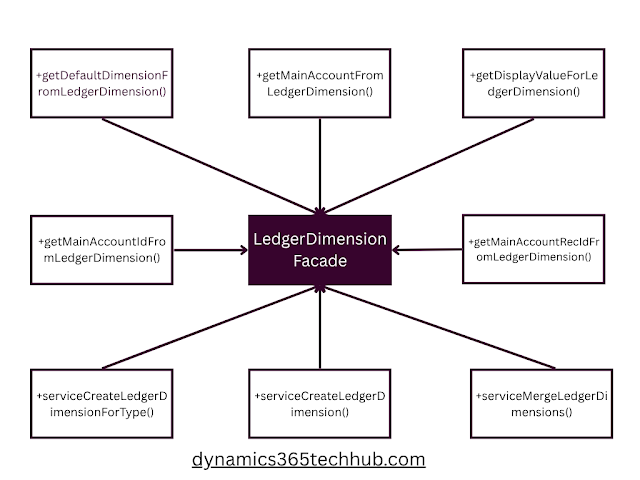Dynamics 365 F&O Deployment Architecture: What You Need to Know
Dynamics 365 F&O
Deployment Architecture (Cloud Based): What You Need to Know
When it comes to Dynamics 365 Finance & Operations
(D365 F&O), understanding the deployment architecture isn’t just a
"nice-to-have", it’s a must for ensuring scalability, performance, and
long-term maintainability.
Whether you're planning a new implementation or optimizing
an existing one, this guide will help you understand the building blocks of a
well-architected D365 F&O environment.
What Is Deployment
Architecture?
In simple terms, deployment architecture defines how
the components of a system are organized, how they interact, and how they're
deployed in environments like dev, test, UAT, and production.
With D365 F&O, this architecture lives in the cloud-first,
SaaS-based world, but there are still many moving parts to consider.
☁️ Cloud-Hosted vs.
Microsoft-Managed Deployments
There are two primary options:
1. Microsoft-Managed (Production Environments)
- Fully
managed by Microsoft in Azure
- High
availability and disaster recovery built-in
- Automatic
updates, scaling, and patching
- Limited
direct access (read-only SQL, limited VM interaction)
Use Case: Always used for production; often for UAT
and SIT.
2. Cloud-Hosted Environments (Dev/Test)
- Customer/partner-managed
in Azure subscription
- Full
admin access to VMs, AOS, SQL, IIS
- Ideal
for development, debugging, and performance testing
Use Case: Dev, Build, Test, Sandbox with full
control.
Core Components of D365
F&O Deployment
1. Application Object Server (AOS)
- The
middle-tier engine that runs business logic
- Scalable,
stateless, often deployed behind a load balancer
2. SQL Azure Database
- Hosts
transactional data
- Optimized
for high availability with geo-redundancy
3. Azure Blob Storage
- Stores
document attachments and file-based integrations
4. Azure Key Vault
- Manages
secrets, credentials, and certificates securely
5. Azure Service Bus / Event Grid
- Powers
asynchronous messaging and Business Events
6. Data Management Framework (DMF)
- Handles
data import/export jobs (via BYOD or data entities)
7. Lifecycle Services (LCS)
- Central
portal for managing deployments, monitoring, and environment health - (ALM).
Network &
Integration Considerations
Integration Entry
Points:
- OData
and Custom Services – CRUD operations and real-time APIs
- Batch
APIs (DMF) – High-volume data movement
- Business
Events – Real-time outbound triggers for external systems
- Dual-write
– Real-time synchronization with Dataverse
Security Model:
- Azure
AD authentication
- Role-based
security in F&O
- Network
isolation via NSGs and private endpoints (where applicable)
Deployment Lifecycle
Overview
|
Stage |
Environment |
Purpose |
Type |
|
Development |
DEV |
Customizations, unit testing |
Cloud-hosted |
|
Build/Test |
BUILD/TEST |
Code compilation, regression testing |
Cloud-hosted |
|
UAT |
UAT |
User acceptance, final validation |
Microsoft-managed |
|
Production |
PROD |
Live system |
Microsoft-managed |
|
Sandbox |
SANDBOX |
Training or hotfix validation |
Microsoft-managed |
Scaling and Performance
- AOS
nodes scale based on user load (Microsoft-managed only)
- Batch
servers can be scaled or split based on workload types
- SQL
tier uses geo-redundancy for high availability
- App
Insights and LCS help monitor performance and resource usage
Architecture Best
Practices
✅ Use separate environments
for Dev, UAT, and Prod
✅
Leverage tier-2 environments for testing customizations
✅
Automate builds and deployments via Azure DevOps pipelines
✅
Use Application Insights for telemetry across microservices
✅
Offload non-critical tasks to Azure Functions or Logic Apps
Final Thoughts
A solid deployment architecture is the backbone of any
successful Dynamics 365 Finance & Operations implementation. As your
business grows, your architecture should scale with it securely, reliably, and
with minimal friction.
Whether you're setting up your first environment or
optimizing an enterprise-scale deployment, having a clear understanding of D365
F&O architecture ensures you're ready for whatever comes next.
.png)
.png)
.png)

Comments
Post a Comment